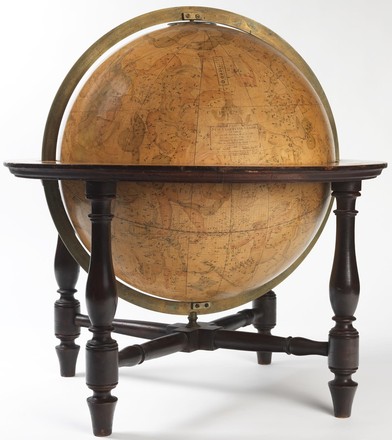
Cary's new celestial globe on which are carefully laid down the whole of the stars and nebulae ... , c. 1830
GLOBE 8
Hand-coloured globe with brass meridian circles and hour rings mounted on a mahogany stand
Purchased from Hordern House in 2013
Hand-coloured globe with brass meridian circles and hour rings mounted on a mahogany stand
Purchased from Hordern House in 2013
This celestial globe shows all the figures of the constellations and stars. The stars are classified in successive orders of magnitude. It shows the contemporary knowledge of the stars and constellations of the Southern Hemisphere to 1820, including the discoveries of Edmund Halley and Abbe de Lacaille.


 Back to list
Back to list